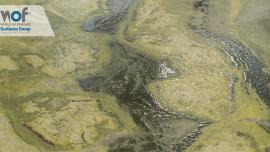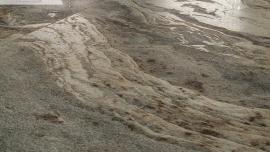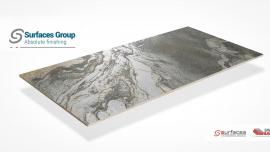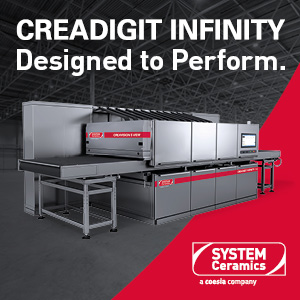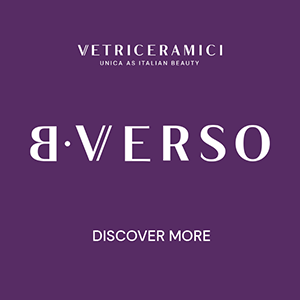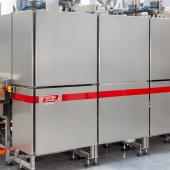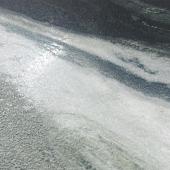Full-field lapped ceramic tiles and slabs: advanced solutions for superior quality
The SuperGloss treatment by NoCoat-Surfaces Group marks a significant step forward in the post-lapping stage thanks to its eco-friendly, water-based formula and its ability to significantly enhance both surface gloss and durability.
Innovation, sustainability and uncompromising aesthetic appeal are the hallmarks of Surfaces Group, a company specialising in ceramic surface processing and finishing. In particular, the NoCoat division’s SuperGloss treatment marks a significant step forward in the post-lapping stage thanks to its eco-friendly, water-based formula and its ability to significantly enhance both surface gloss and durability.
Why choose SuperGloss?
During the lapping phase, a few microns of material are removed from the tile surface, leaving it with open pores and feed marks typical of a 2000-grit finish. This is where SuperGloss comes into play:
- It fills and seals pores, creating a uniform surface.
- It eliminates residual abrasive marks, ensuring an ultra-sharp finish.
- It dramatically increases gloss levels, boosting the value from approximately 70 GU (post-lapping) to 95 GU, and in some cases up to 100 GU after polishing with machines such as BMR’s Supershine.
- By fully sealing micro-cavities, it acts as a protective barrier against the stains covered by ISO standards (chrome green, iodine and oil), as well as cement grout, tile joints, footprints and even permanent marker pens.
Safety and sustainability
SuperGloss is a VOC-free product (as certified by a Sassuolo-based laboratory) and holds FCM food safety certification (EC 1935/2004 – EU 10/2011), guaranteeing that it does not release harmful substances when in contact with food. This is because it has an inorganic composition and forms a ceramic-like lattice with a very similar structure to that of the tile surface itself.
How SuperGloss differs from Nano Wax
SuperGloss stands apart from the organic treatments that are widely used in some non-European markets, such as Nano Wax. The latter, in fact, forms a 2-3 micron organic film on the surface, has a shorter lifespan and poses eco-toxicological risks (source: ECHA). Moreover, gas chromatography analysis reveals the presence of three hazardous siloxane by-products with high VOC emissions. Nano Wax, also contains silicones that can migrate into food, making FCM certification unattainable.
By contrast, the SuperGloss treatment
- Penetrates and seals only surface porosity, without forming an organic film.
- It does not release harmful substances and is VOC-free.
- It ensures maximum gloss and long-lasting performance.
- It holds FCM certification, which means it is safe for contact with food.
Comparative tests and results
The Surfaces Group’s pilot plant in Sassuolo – equipped with a ten-head lapping machine and a Supershine polishing machine – conducts polishing and treatment tests to evaluate the performance of the solutions developed by the group. In one specific test, Nano Wax was compared with SuperGloss.
Prior to installation, both treated surfaces had an identical gloss level (101 GU) and the same degree of water repellence. After installation (following the application of cementitious adhesive and grout) and subsequent cleaning, the floor treated with SuperGloss maintained its original gloss level and water-repellent properties, while the floor treated with Nano Wax experienced a fall in gloss level to 88 GU, along with a significant decline in water repellence and the appearance of scratches due to grout application.
With SuperGloss, Surfaces Group offers an advanced and sustainable solution that not only increases surface gloss levels but also provides long-lasting protection and safety for end users. The Sassuolo pilot plant is available for customised testing, allowing companies to evaluate the performance of SuperGloss firsthand.
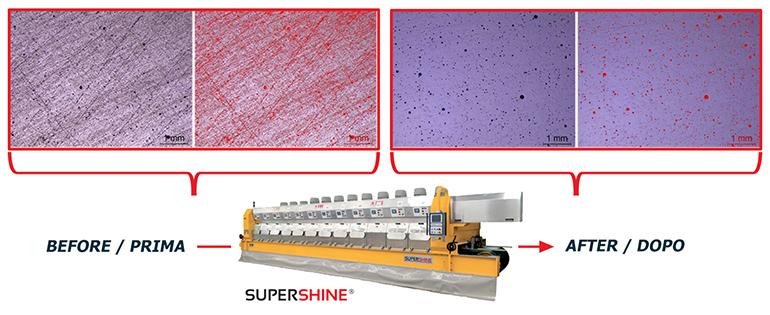
Did you find this article useful?
Join the CWW community to receive the most important news from the global ceramic industry every two weeks






